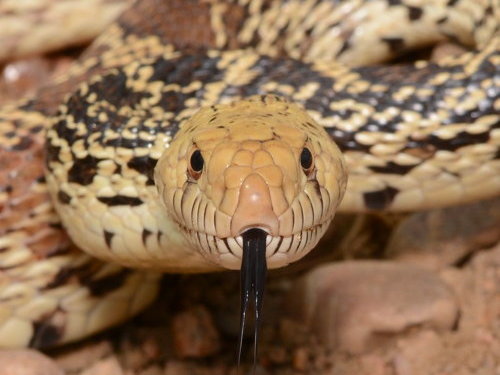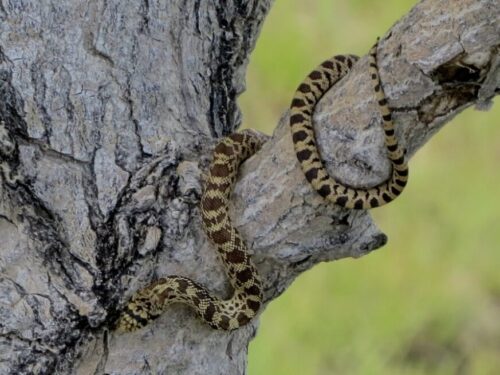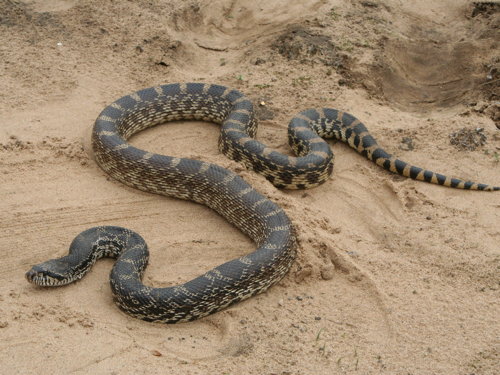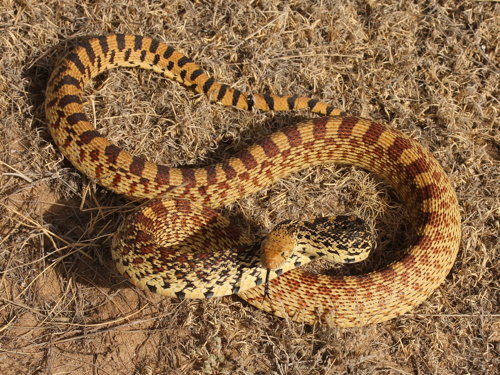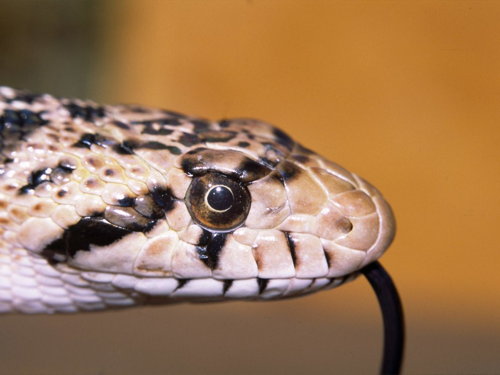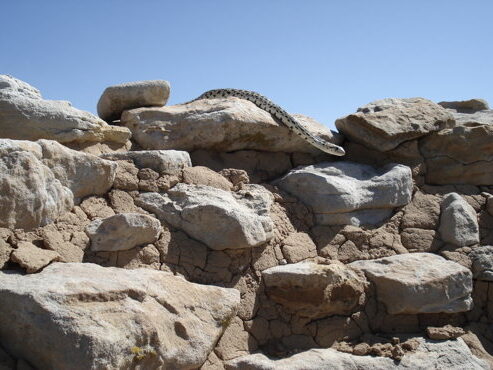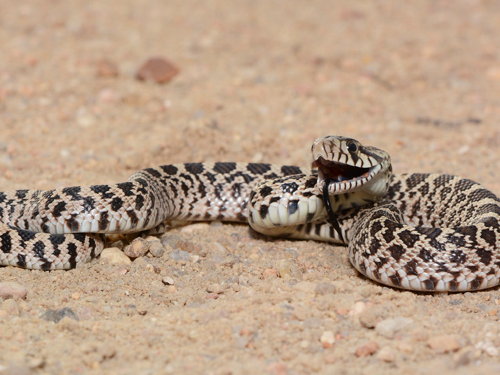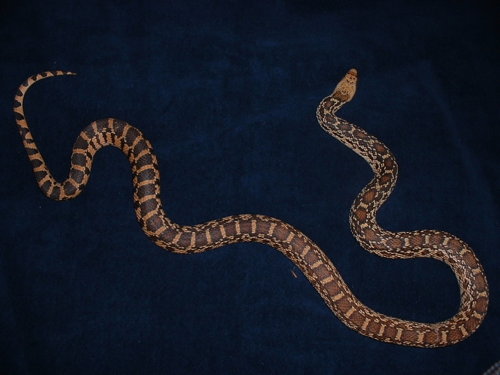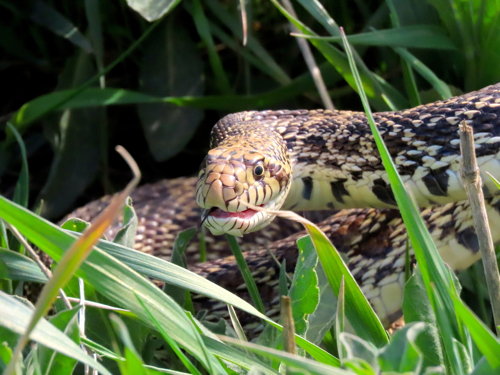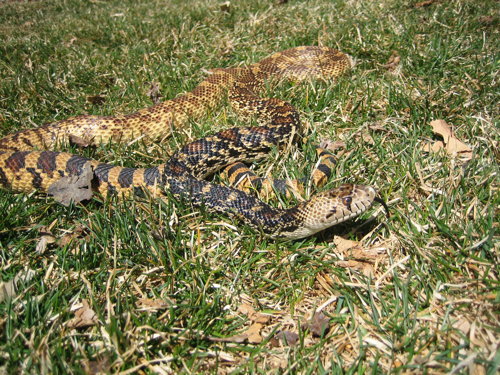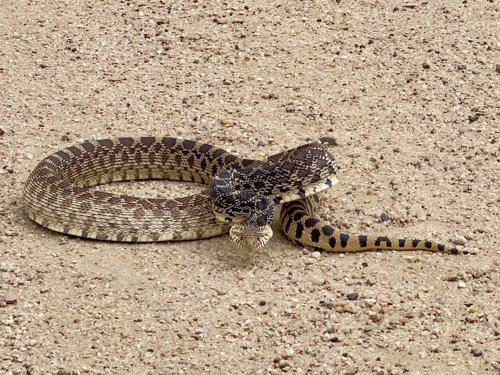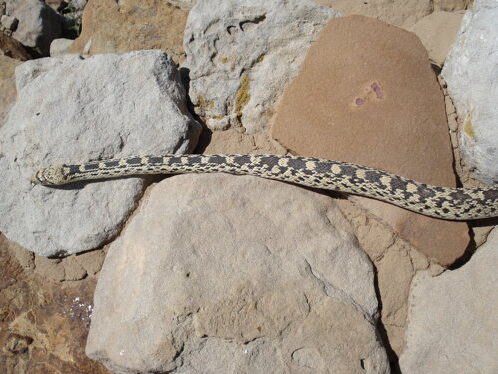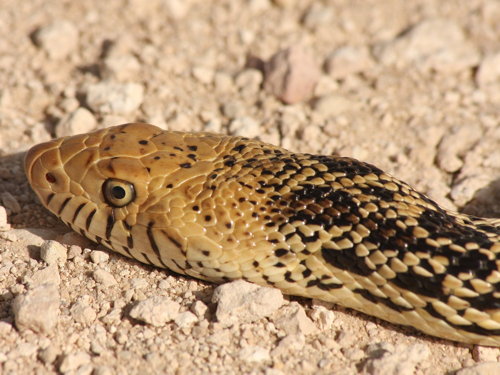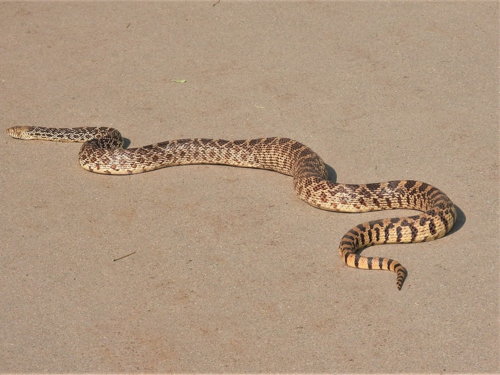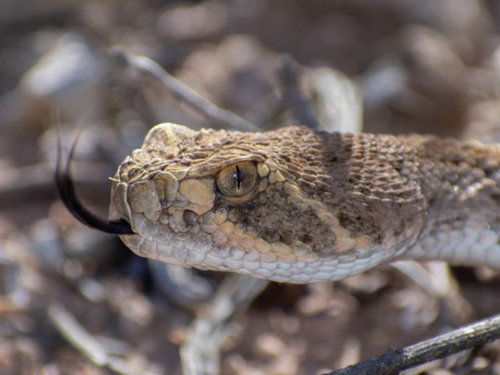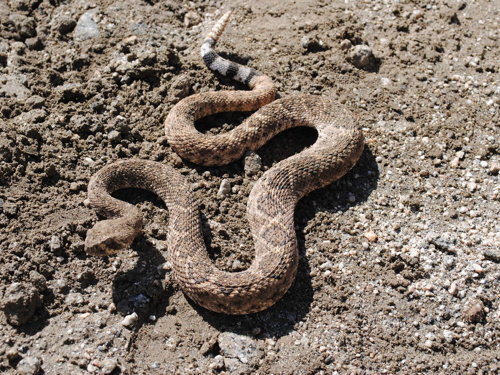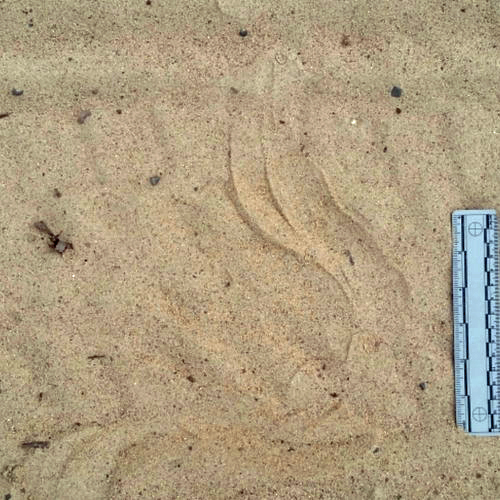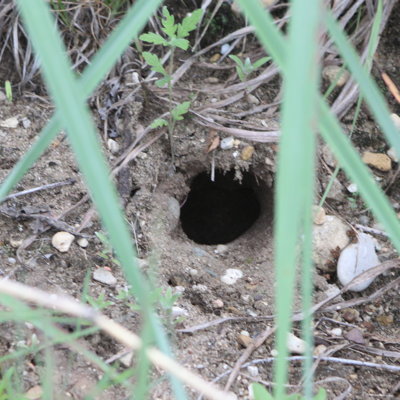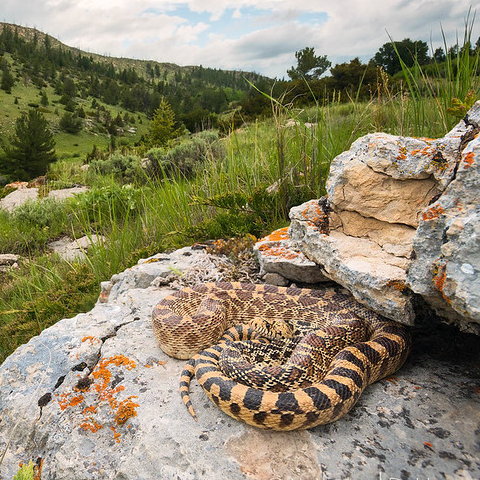Bullsnake
Also known as: Western Gopher Snake
Scientific name: Pituophis cantenifer sayi
Type: Reptitle
Family: Colubridae (Advanced Snakes)
Size: Up to 6 foot long
Weight: 2.2 to 3.3 pounds
Life Span: Up to 12 years
Physical Description
The bullsnake, as known as a gopher snake, are very long and non-venomous. These snakes have a turtle-shaped head with a protruding scale at the tip of the snout, narrow neck, and large eyes. Their scales are smooth and marked with brown, black and/or reddish blotches on a background of lighter tan to gray. The actual pattern of these blotches vary with the local region but tend to be darker near the head and tail.
Bullsnakes are often mistaken for rattlesnakes due to their appearance and aggressive behavior. However their bodies are longer and more slender compared to the rattlesnake. The real difference between the two is evident in the head. A bullsnake has a narrow, rounded head and eyes with round pupils as opposed to the rattlesnake which has a flat, triangular head and slitted pupils. And most importantly, the bullsnake does not have a rattle on its tail. These traits are illustrated in the photos below.
Pretending to be Rattlesnake
Range and Habitat
Bullsnakes are found throughout North America — all of the US, central and northern Mexico, and southern Canada. There are a large number of subspecies. The one present in the local area is Pituophis cantenifer sayi.
Bullsnakes prefer open areas such as prairies, old fields with sandy soil and abundant burrowing rodents.
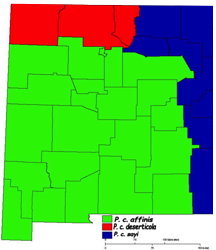
Diet
Bullsnakes eat a variety of small mammals including mice, rats, gophers, squirrels, and rabbits. They will also eat birds and their eggs; and occasionally they will take lizards and other snakes.
Bullsnakes kill their prey by constriction but are at risk when trying to overpower a large rodent. In such instances, they may be badly bitten or even killed.
Behavior and Social Life
Bullsnakes are most active during the daytime but can hunt at night during the hot parts of summer. They can climb, but usually spend most of their time foraging and resting in rock crevices or an abandoned rodent burrow. As with most snakes, they like to bask on warm sand or rock.
These snakes are generally gentle but they can be very defensive, particularly when they perceive an object as a predator, i.e., too big to be prey. They will coil up, hiss, and shake their tails imitating a rattlesnake. They will quickly move away from a threat whenever possible.
Bullsnakes are generally active from early spring to mid-fall and hibernate undercover during the colder months. They are known to share a den with other snakes, including those from other species.
Striking and Crawling
Life Cycle
Bullsnakes mate in early spring. The female lays eggs (typically around 12) about 30 days later in a self-dug nest in sandy soil. The whitish eggs have tough shells and are about 1 1/2 to 2 inches in size.
The eggs hatch about 60 days after being laid. The young are about 10 to 18 inches long at this time. The hatchlings, which are a bit lighter in color than their parents, grow quickly and shed their skin for the first time at about a week old.
Hatched Eggs
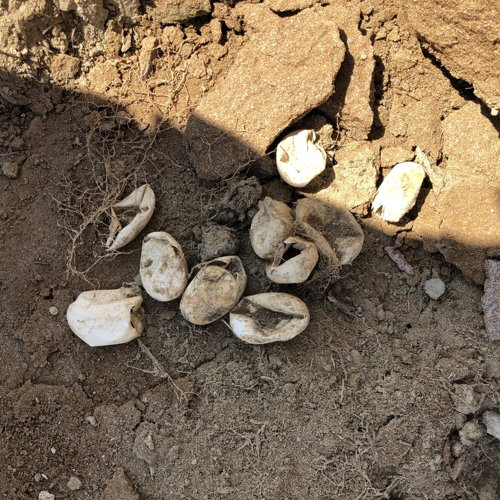
Juvenile
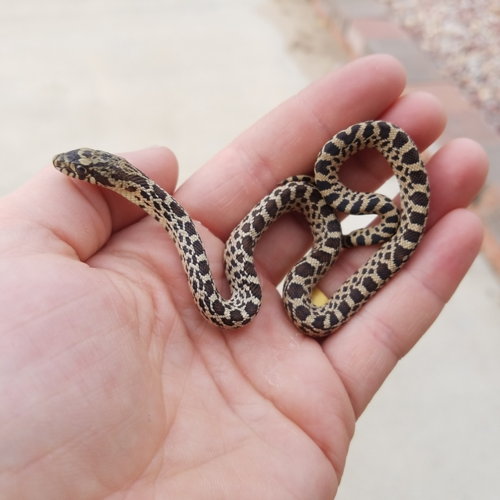
Ecological Role
Bullsnakes are dependent on small mammals for food and as a source of abandoned burrows for shelter and places to lay their eggs.
In contrast, they do not have many predators as adults. Young snakes, however, are vulnerable for attack from birds, mammals, and other snakes.
Interactions With Humans
Bullsnakes, as important predators on rodents, are considered a “friend” by farmers. However, they can inflict a painful bite if harassed or handled improperly.
Interesting Facts
- Bullsnakes are likely the longest snakes in New Mexico.
- Bullsnakes have an average home range of 18 acres.
- These snakes are not venomous but rather kill their prey by wrapping their body around prey and squeezing it.
- Bullsnake females leave their eggs without protection to hatch on their own.
- The population of bullsnakes is slowly decreasing due to the disappearance of grasslands which are necessary for their breeding.
- Since bullsnakes move slowly, they are frequently killed while crossing a road.
- These snakes are long-lived in captivity, with one reported living 22 years.

